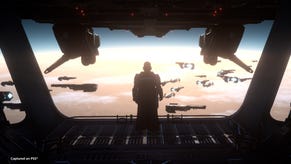It took two weeks to get Gears 5 to RTX 2080 standard on Xbox Series X
It’s looking like ports of older games will be a doddle for developers on Xbox Series X.
In just two weeks, Gears 5 developer The Coalition managed to get the cover-shooter up and roadie running on Xbox Series X.
First the developer worked with Epic Games to allow Unreal to run on Xbox Series X, then it was a case of upping all the presets to the equivalent of PC’s ultra settings, according to the Digital Foundry, who got a chance to see the Xbox Series X in action.
Gears 5 on Xbox Series X runs with improved contact shadows, as well as ray traced screen-space global illumination, using a software-based solution. All the cutscenes also run in 60fps on Xbox Series X, compared to the 30fps on Xbox One X.
The end result of this unoptimised port delivered in two short weeks is Gears 5 running in equivalent quality to the game on a PC with an RTX 2080 GPU. And just like Cyberpunk 2077, the upgrade will be free for anyone who already owns the game, thanks to Smart Delivery - no need to double dip.
All of this is without accessing some of the console’s most advanced features. A feature called Mesh Shading will apparently allow developers to create more complex, detailed scenes without sacrificing frame rate.
The Digital Foundry report also waxes lyrical about Xbox Series X’s ray tracing solution, which will allow light to bounce around game worlds in more natural, convincing ways. Microsoft showed a version of Minecraft - the Minecraft DXR tech demo - that used real-time ray tracing, which DF called “the most striking implementation of ray tracing”.
“We’re super excited for DXR and the hardware ray tracing support,” Coalition technical director Mike Raynor explained. “We have some compute-based ray tracing in Gears 5, we have ray traced shadows and the [new] screen-space global illumination is a form of ray traced screen-based global illumination and so, we’re interested in how the ray tracing hardware can be used to take techniques like this and then move them out to utilising the DXR cores.
“I think, for us, the way that we’ve been thinking about this as we look forward, we think hybrid rendering between traditional rendering techniques and then using DXR - whether for shadows or global illumination or adding reflections - are things that can really augment the scene and [we can] use all of that chip to get the best final visual quality.”









.png?width=291&height=164&fit=crop&quality=80&format=jpg&auto=webp)

